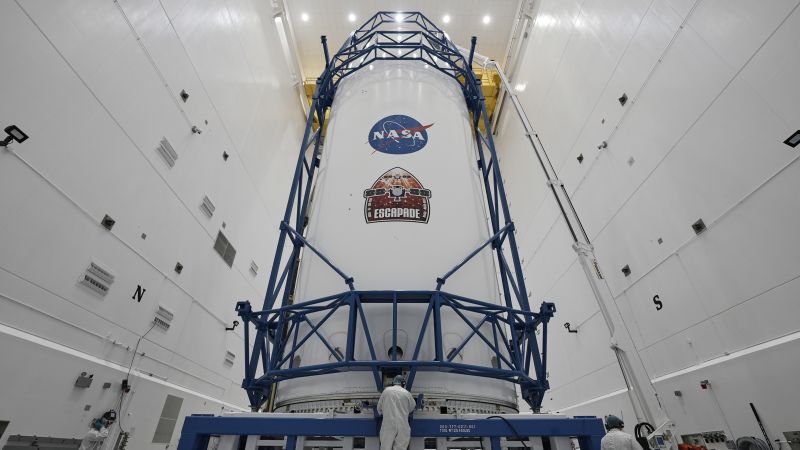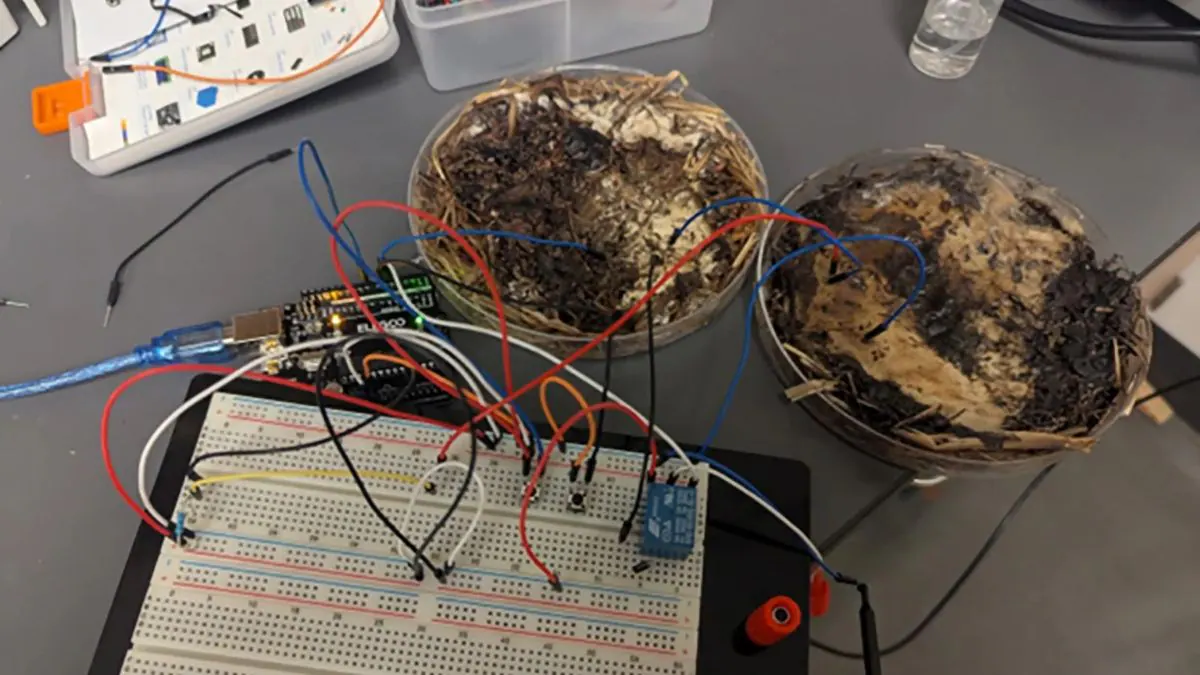Copyright Cable News Network

Twin spacecraft are set to take off on an unprecedented, winding journey to Mars, where they will investigate why the barren red planet began to lose its atmosphere billions of years ago. Called EscaPADE, the mission will aim for an orbital trajectory that has never been attempted before, according to aerospace company Advanced Space, which is supporting the project. If successful, it could be a crucial case study that can allow extraordinary flexibility for planetary science missions down the road. The robotic mission plans to spend a year idling in an orbital backroad before heading to its target destination. The project is part of NASA’s SIMPLEx, or Small, Innovative Missions for Planetary Exploration, program, which aims to spur researchers and companies to devise ways to use small spacecraft to carry out science investigations for pennies on the dollar. EscaPADE, short for Escape and Plasma Acceleration Dynamics Explorers and led by the University of California, Berkeley, is among the most ambitious. “We don’t use the word ‘cheap.’ We say, ‘high value,’” joked Jeff Parker, chief technology officer at Colorado-based Advanced Space, which is participating in the project along with California-based Rocket Lab. “We’re providing science that is at the level of missions that cost hundreds of millions of dollars, but with a low budget.” EscaPADE’s cost was less than $100 million, compared with the roughly $300 million to $600 million price tags of other NASA satellites orbiting Mars. The spacecraft are slated to lift off atop Blue Origin’s New Glenn rocket — marking the first time the new launch vehicle has flown with valuable cargo on board — as soon as 2:45 p.m. ET Sunday from Cape Canaveral Space Force Station in Florida. The launch attempt could be affected by the government shutdown if it’s delayed after this weekend. Blue Origin said in a statement that it has “been working closely with the FAA (Federal Aviation Administration) to ensure that New Glenn’s upcoming launch of the ESCAPADE Mission to Mars can proceed.” Outside the ‘transfer window’ Typically, spacecraft destined for Mars will wait until the planet is in prime alignment with Earth during a period called the “transfer window.” Such launch opportunities span a few weeks and occur about every 26 months, allowing spacecraft to take a quick-shot trajectory to the red planet. When it was originally conceived, EscaPADE was expected to take a direct path. But a quagmire of launch delays, changes to mission plans and other quirks of timing left the orbiters without a ride when the last Mars transfer window closed in late 2024. Rather than waiting for the next prime opportunity in 2026, mission designers opted to get creative — hashing out a “launch-and-loiter” approach that could allow EscaPADE to take flight any day of any year and still reach Mars with fuel to spare. “The idea is launch anytime, loiter until the planets are just perfectly aligned, and then to depart on your interplanetary cruise to Mars,” Parker explained. After takeoff, the twin EscaPADE spacecraft will soar into deep space. But rather than turning toward Mars, the two orbiters will instead aim for Lagrange Point 2, or L2 — a cosmic balance point about 1.5 million kilometers (930,000 miles) from Earth. Lagrange points are special because they act as gravitational wells in which the pull of the sun and Earth are in perfect balance. The conditions can allow spacecraft to linger without being dragged away. The L2 point also offers “a really nice radiation environment” as far as outer space goes, Parker noted, where the spacecraft will “stay up in a very high orbit outside of the radiation belts.” The spacecraft will then loop endlessly in a kidney bean-shaped orbit around L2 until next year’s Mars transfer window opens. The EscaPADE vehicles would then briefly swing back around Earth in November 2026, allowing them to head out on a path to Mars at long last. No matter what day EscaPADE takes flight, both spacecraft will enter Martian orbit in September 2027. A risky endeavor The groundbreaking plan, however, has its drawbacks. “Spacecraft components do experience wear and tear in space,” Parker said. “So no matter what, this does add a little bit of risk.” Accepting that added risk is necessary, Parker said, to help drive down costs. And doing so means mission operators must acknowledge that success is not guaranteed. Other low-cost missions flown under the NASA’s SIMPLEx program have failed due to a range of setbacks, including Lunar Trailblazer, which ended due to communications problems, and LunaH-Map, which experienced launch delays that left the spacecraft in suboptimal condition. If successful, EscaPADE could be the first bright spot in NASA’s campaign to conduct planetary science on the cheap. And it only takes one, Parker argued, to make the program worth it. “If the SIMPLEx program, which is trailblazing these high-value missions, succeeds in one mission out of three, that is still much higher value than the traditional-cost missions,” Parker said.



